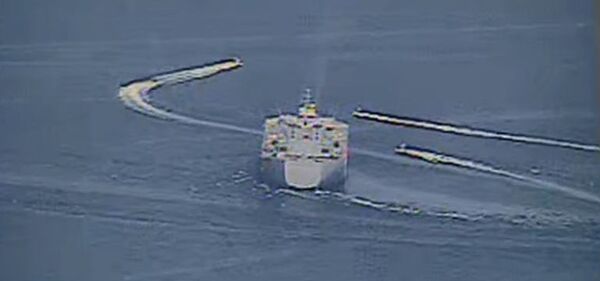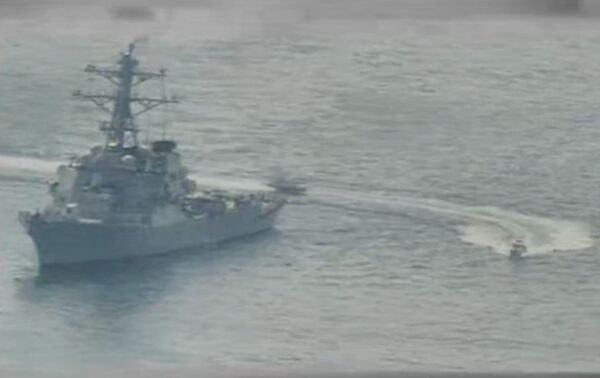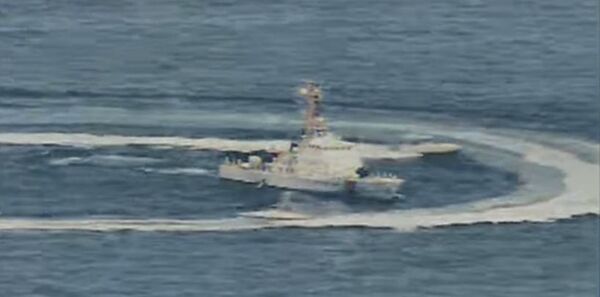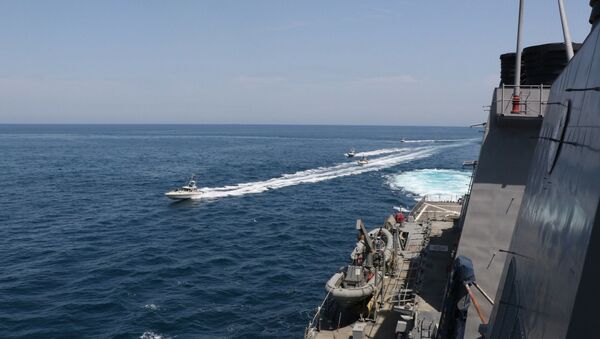According to a statement from US Naval Forces Central Command in Bahrain, 11 vessels from Iran's Islamic Revolutionary Guard Corps Navy (IRGCN) harassed several US warships engaged in exercises in the northern Persian Gulf on Wednesday.
"The IRGCN vessels repeatedly crossed the bows and sterns of the US vessels at extremely close range and high speeds," the statement says, noting that some passed within 50 yards of the bow of the expeditionary mobile base vessel USS Lewis B. Puller and within 10 yards of the USCGC Maui, a US Coast Guard cutter of the Island-class.


The other US vessels were the guided missile destroyer USS Paul Hamilton, the patrol ships USS Firebolt and USS Sirocco, and Coast Guard cutter USCGC Wrangell. The Navy notes they were engaged in operations in international waters with US Army AH-64E Apache attack helicopters.
According to the US Navy, their crews issues multiple warnings over radio, blasts from the ship's horns and with long range acoustic noisemakers, which took the Iranian boats roughly an hour to acknowledge.


"The IRGCN's dangerous and provocative actions increased the risk of miscalculation and collision, were not in accordance with the internationally recognized Convention on the International Regulations for Preventing Collisions at Sea (COLREGS) 'rules of the road' or internationally recognized maritime customs, and were not in accordance with the obligation under international law to act with due regard for the safety of other vessels in the area," the Navy said.
A video shared by the US Fifth Fleet on social media shows two Iranian vessels passing in front of several US warships, which blow their horns in response.
Video of #IRGCN vessels conducting dangerous & harassing approaches on U.S. naval vessels in the international waters of the North Arabian Gulf. pic.twitter.com/zL9VKQ0eiQ
— U.S. 5th Fleet (@US5thFleet) April 15, 2020
The US has been conducting military operations in the Persian Gulf since late March, with the amphibious assault ship USS Bataan and its battle group arriving in the waterway in early April. The area has become an international flash point, as it is situated between regional rivals Iran and Saudi Arabia, the latter of which is a US ally, and a large portion of the world's seaborne petroleum trade passes through the waterway.


